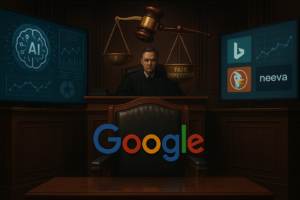Assessing the Risks of Advanced AI: Understanding Regulatory Measures
As artificial intelligence (AI) continues to evolve, regulators are faced with the daunting task of determining when AI becomes too powerful to operate without oversight. By examining the computational capabilities of AI models, particularly those measured in floating-point operations per second, lawmakers are striving to establish effective regulations to prevent potential dangers. This article explores how regulators are attempting to quantify AI power to ensure safety and security in an era of rapid technological advancement.
The Growing Concerns of AI
The rapid growth of artificial intelligence (AI) brings both exciting opportunities and significant challenges. As these technologies advance, the concern about their potential dangers escalates. How do we determine when an AI system has become powerful enough to pose risks that warrant regulation? This question is at the forefront of discussions among regulators and policymakers.
Mathematical Assessment of AI Capabilities
At the heart of this issue is a mathematical approach to assessing AI’s capabilities. Recently, a threshold has been proposed where AI models exhibiting a computational power of 1026 floating-point operations per second (FLOPS) require reporting to the U.S. government. This figure, which translates to a staggering 100 septillion calculations per second, represents a level of power that could enable these systems to perform tasks with unprecedented speed and efficiency.
Implications of High Computational Power
The implications of such computational prowess are profound. Lawmakers and AI safety advocates express concern that AI systems capable of such operations might be able to:
- Develop or disseminate advanced technologies, including weapons of mass destruction.
- Conduct severe cyberattacks.
The fear is not unfounded; as AI models become more sophisticated, their potential applications could lead to catastrophic consequences if left unchecked.
Regulatory Frameworks for AI
In response to these concerns, regulatory bodies are working to create frameworks that can effectively oversee the deployment of high-capacity AI systems. These regulations aim to ensure that powerful AI technologies are developed and utilized responsibly, with appropriate safety measures in place. However, experts acknowledge that these regulatory efforts are not without their challenges.
Challenges in Crafting Regulations
Crafting effective regulations is a complex endeavor, especially in an area that evolves as quickly as AI. Current regulations may provide a starting point, but they require continual updates to keep pace with technological advancements. Moreover, the sheer diversity of AI applications makes it difficult to establish a one-size-fits-all approach. Each application may present unique risks and benefits, demanding tailored regulatory responses.
The Importance of Collaboration
As AI technology continues to proliferate, the conversation around its regulation and safety is more crucial than ever. Stakeholders, including technologists, ethicists, and government officials, must collaborate closely to strike the right balance between innovation and safety. A proactive approach in regulating AI will not only help mitigate risks but also foster public trust in these powerful technologies.
Understanding when AI becomes too powerful to operate safely is a critical concern for regulators. By focusing on quantifiable metrics like computational capacity, lawmakers aim to create a framework that can adapt to the evolving AI landscape. As we navigate the complexities of AI regulation, the goal remains clear: to harness the power of AI while safeguarding society against its potential dangers.


